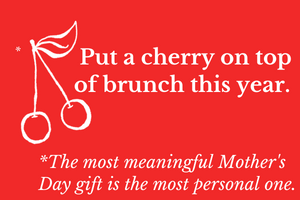elephant journal is proud to be the official new media partner with LOHAS Forum. Click here for our ongoing LOHAS coverage, and be sure to follow our live coverage on Twitter. [Our editor Waylon Lewis is honored to serve on two panels during this event.]
elephant journal: Tell me about your experience with LOHAS.
Marc Barasch: I’ve been around since almost the beginning. New age business had been bifurcated, and suddenly people were beginning to figure out how to put their spiritual ideas into business. It started with good ol’ tofu companies, small granola businesses just beginning to advertise and act like real businesses.
elej: How have you seen it change over the years?
MB: It’s been a mixed blessing. You lose some of the authenticity of the core intent as companies sell to larger conglomerates. It’s wonderful thatit propagates the meme and distributes the products at a scale that a small company never could have done. There are tremendous benefits to that. But from my somewhat outside observation, you also lose some of the integrity. For example, if you look at Ben and Jerry’s, when they were acquired by Unilever, I believe they intended to keep a very progressive business model, including a fixed ratio of how much top executives were paid. However, that model was not kept.
So the LOHAS community needs to ask: how can LOHAS not replicate some of the disparities and discontinuities of the prevailing system that are collectively driving us off a cliff? I think it’s time for companies to not just look at the sustainability and humanity of their organizational development, not just as a CSR add-on or a laudable afterthought, but something that’s included in the raison d’être of the company itself? I think that’s the question that we need to be asking. What does the company do? What is the product? How can we ensure that it’s not increasing consumerism?
How does this push forward a new emergent model, without pushing forward the parameters of a dysfunctional system? How does it value and push forward what needs to be done in the world? And quickly? We need to step out of the matrix and look at this from some zero point and reverse engineer it. What does the world need, and how do these entities—businesses and corporations—directly serve that need?
In an era where money is de-realized into nothing but bits and bites, a fictive system based on number magic, the priests of the numerate have always worked abstract magic on the masses, and become the elite through magical hand gestures—in this case, tapping on keyboards.
I’m very personally interested in complementary currencies. Look at Switzerland, for example. One reason that they’ve been so stable economically is not just because they are neutral, but because they have some very sophisticated complementary currencies to meet social needs, as well.
elej: What do you think we need now?
MB: I think it’s time for radical experimentation, we need hybrid or fusion companies, with nonprofits using the profit system and businesses founded with a social mission first, such as Patagonia.
How do we take on the really large social mission of true transformation, and not just nibble around the edges of real change? I think that’s not just grandiosity. It’s necessity.
How do we model as organizations that meet emergent civilization?
elej: How are you modeling an organization that meets the emergent civilization?
Marc Barasch rockin' a slanted beret FTW.
MB: This might sound pretentious, but I really took a cue from something Thomas Keating once said, something to the effect of, “I get up every morning, and I decide what will do the most good. This simplifies things tremendously.”
6 years ago, when Field Notes on the Compassionate Life came out, I thought, “If I’m talking about compassion, I need to enact it.” So I stopped my entire career trajectory from that point forward, and asked how I could do the most good and accept whatever answer I was given. I asked myself, “what does the universe want?” And I’ve followed that question pretty loyally for these last 5 years.
That lead to a lot of coincidences, that eventually led me to planting trees in Ethiopia, to start. I started the Green World Campaign, and watched it grow into a mostly volunteer-driven organization that’s now operating in 5 countries (Kenya, Ethiopia, Mexico, Philippines, India). We’ve planted close to 500,000 trees. We’re involved in regenerating communities. We’re restoring the economy and ecology of the world’s poorest places, doing work that serves people and planet. In the model of agroforestry that humans and nature have been co-creating since the beginning.
The idea that our relationship to the natural world is to avoid keeping our own destructive hands off it, is inadequate, completely. We’re supposed to work in an integral way together. Renew communities as we renew the environment.
How do we take the holistic model that we all ascribe to philosophically and apply it in the real world, particularly at the bottom of the pyramid, with the people and places that our collective fate is inextricably entwined? Collective enactment of the global village.
As a critique, we’re very good at created “enlightened, green-gated communities”. But how does this affect the poorest of the poor? To apply some green version of trickle-down economics is delusional. Driving a virtuous hybrid in Boulder doesn’t affect the plight of a bottom-of-the-pyramid subsistence farmer in Kenya, or the tragic degradation of his or her environment. If we really believe everything is connected, then we have to devote some attention and direct, tangible efforts to improve the economy and ecology of these seemingly antipodal places on which our own fate also ultimately depends.
Reforestation is a quantifiable healing strategy. We are using interactive new media and new technologies. It’s part of the DNA of GWC. We have an alliance with Digital Globe, the largest satellite imaging company, to be able to show donors over time degraded areas turning green.
A tree is a deeply embedded meme in the human psyche. We’re a tree-planting species. We always have been.
We’re operating in many domains, whether it’s carbon credits for eco-stoves, creating social enterprises by sourcing commodities like herbs and teas, non-timber forest products, how to partner with indigenous communities in a way that empowers them and also introduces appropriate technology and new agronomic strategies that are harmonious with their traditional agricultural practices.
We are not only providing environmental education, but also working on linking that up with schools in the US, so kids can get a sense of the global village. I’m big on creating positive feedback loops in a way that empowers global citizens. Doing good doesn’t have to be only through large corporations and large environmental groups. How do we self-aggregate and do something that we can see that benefits all of us?
How do we all learn from each other? I’m taking pains to pick and search partners that are mission-aligned and have a real global citizen mindset. Some sort of understanding of the spiritual underpinnings of human existence, if you will. We’re not aiming to be USAID. We want to work with the LOHAS community. We’re propagating ideals in the context of the developing world that are really building global community that includes the poorest of the poor.
Our model is infinitely scalable. With proper funding, we could scale this up almost immediately.
I call this work Green Compassion. And the movie “I Am” also relates to this.
elej: Tell me about I Am.
MB: I got a call from Tom Shadyac, who wanted to make a film about the book. A large part of the film is based on the book. Here’s a guy who had earned about $2.1B dollars gross for the studios thru his Jim Carey and Eddie Murphy movies. As much as possible, I want Green World Campaign to be congruent with the ideals presented in the movie and the book. Everything I do is informed by my own healing work and experience, and my background in Buddhism. It all stems out from that.
Interviewer’s note: And that’s what it’s all about.






Read 3 comments and reply